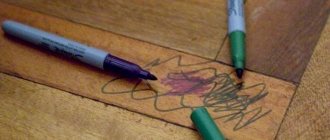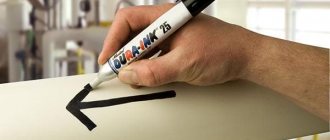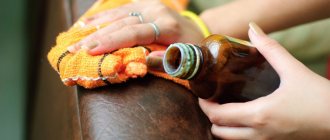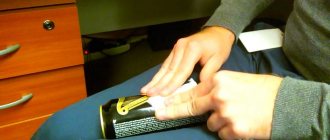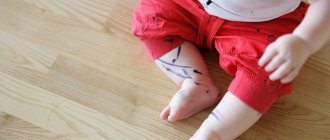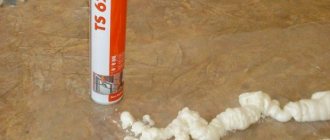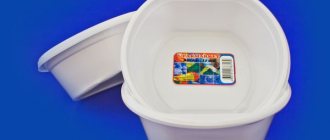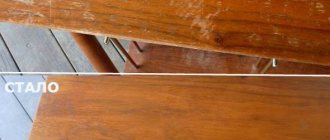How to Remove Marker Marks from Fabric
If the material is white, use bleach. Dilute it in water according to the instructions on the package and soak the item, then wash as usual.
Stains on items made of thick fabrics (sheets, towels) can be treated with alcohol or acetone. Moisten a cotton swab with the chosen product and rub the contaminated area. Then rinse and wash with powder.
Citrus juice is also suitable for most fabrics. Drop it onto the stain (for delicate materials, dilute with water in a ratio of 1: 1) and rub, and then wash.
General recommendations
Before you wash the marker from the fabric, you should pay attention to the type of rod in it, since the difficulty of removing the pigment will depend on this.
There are 4 types of marker bases:
| 1 | Water | More details |
| 2 | Alcohol | More details |
| 3 | Oily | More details |
| 4 | Paint and varnish | More details |
1
Water
A classic option, getting rid of traces of it is quite simple. Fresh stains can be removed by regular washing.
2
Alcohol
Alcohol-based markers retain their color brightness for a long time, but getting rid of them on fabric is not so easy. Ammonia or ethyl alcohol or other solvents are usually used for this.
3
Oily
Oil markers are rarely used at home, but this type of core base still exists. You can get rid of traces of it with oil, but keep in mind that later you will have to clean the item from greasy stains.
4
Paint and varnish
The most difficult type of pigment in markers to remove, it is quite difficult to get rid of. Even the strongest stain removers usually cannot cope with paint markers, so you need to use special paint removers to clean the material.
You need to choose what you can use to wash markers from clothes based on the type of base, since cleaning fabric using universal methods may not be as effective.
Also, before you wash the marker from the fabric, pay attention to some recommendations:
- Do not use hot water to try to remove marker marks from clothing. High temperatures can make the problem worse.
- If you are using solvents and trying to remove a stain mechanically, wipe it from the edges to the center, without going beyond the edges, so as not to stain the clean cloth.
- Before cleaning the material, place a sheet of paper or cloth under it to avoid the pigment from the marker imprinting onto the clean item.
- Before cleaning an item, study the type of fabric being treated and the care instructions indicated on the label.
- Pre-test the chosen method on a small and inconspicuous area of fabric to avoid damage to the item.
- You need to start removing the stain as quickly as possible - this way the pigment will not have time to fully set in the fibers of the fabric, which will make it easier to remove.
How to remove marker marks from furniture upholstery
Hairspray is suitable for leather upholstery. Spray it onto the stain and rub it with a clean rag. Remove any excess polish with a clean, damp cloth and apply a leather furniture protectant to the area.
For fabric upholstery, use hydrogen peroxide and alcohol. First, soak a rag in peroxide and rub it into the stain for 10 minutes, then do the same with another rag soaked in alcohol. Then apply a clean damp cloth and finally blot dry.
For another method, mix one tablespoon of liquid soap with a tablespoon of white vinegar and two cups of cold water. Apply to the stain and leave for half an hour, again applying a rag with the mixture to it every 5 minutes. Then wipe with a clean damp cloth and blot with a paper towel.
Universal remedies for marker stains on clothes
Let's look at universal products that can help with marker stains.
| 1 | Laundry soap | More details |
| 2 | Vegetable oil | More details |
| 3 | Alcohol | More details |
| 4 | Lemon juice | More details |
1
Laundry soap
A classic way to remove various stains from fabric, which involves rubbing the stain with ordinary laundry soap. The item is left in a rubbed state for 15-20 minutes, and then rinsed and washed.
Laundry soap is a gentle but effective remedy. Laundry soap is especially helpful if you are struggling with fresh marker stains.
2
Vegetable oil
You can use oil regardless of the type of material being processed. It is suitable for removing regular and permanent markers.
generously soaked in vegetable oil, and then it is applied to the area with the stain. The disc is left in this position for 30 minutes, and then the mark itself is wiped with it - from the edges to the center until it becomes discolored. After this, the item is washed and sent for washing.
3
Alcohol
Alcohol will help you get rid of traces of almost any marker on clothing, regardless of its type. In addition, it does not leave streaks or yellowness on the fabric after use, returning it to its previous condition.
Alcohol is used as follows:
- Soak a cotton pad generously in alcohol.
- Apply the cotton pad to the stained area.
- Leave the item in this state for 20 minutes.
- Using the same cotton pad, lightly rub the material without going beyond the boundaries of the stain. Move the sponge from the edges to the center.
- Rinse the stained area and put the item in the wash.
In this method, you can use not only ordinary ethyl alcohol, but also ammonia. However, in this case, you will have to wash the item with conditioner to get rid of the unpleasant smell of ammonia. You can replace alcohol with vodka.
4
Lemon juice
Acid also effectively fights marker marks, corroding and discoloring it, which is why lemon juice is a popular remedy used by many housewives for laundry.
The essence of the method:
- Roll the lemon on the table a little to soften it and make it juicier.
- Cut the lemon in half and squeeze out the juice.
- Apply the juice to the stain and leave it in this state for 15 minutes.
- Rinse the material and wash.
You can replace lemon juice with citric acid. To do this, dissolve it in water and treat the stained areas of the item with the resulting solution.
Advantages and disadvantages of using various means
Each method has advantages and disadvantages. It depends on them how and what surface can be treated with one or another product. Below we briefly talk about the main advantages and disadvantages of some products.
Ethanol
On the plus side, it copes with traces of all types of markers, is softer than chemical solvents, does not need to be washed off, and is safe for fabrics and plastic.
The downside is that it is less effective than chemical products and dries out the skin.
Baking soda and toothpaste
Since soda with paste is available in every home, this is already a major plus. Baking soda is an active paint base breaker, and toothpaste has an exfoliating effect. An affordable homemade way to get rid of marker marks.
The disadvantage of the mixture is that it is difficult to wash out. It is rarely used to clean fabrics. And if you don’t dissolve the soda crystals enough, the resulting paste will turn into an abrasive. It will ruin polishing, glass, and varnish coatings.
Melamine sponge
A universal anti-pollution product that is easy to use. Simply soak it in water and the cleaning foam will form in the pores. The paint will wash off and be absorbed into the sponge without spreading across the surface of the item.
Due to the toxicity of melamine, you should not use a sponge to clean children's clothes, shoes, dishes, or the dining table. Once in the body, it settles in the kidneys, which can lead to complications.
Acetone and WD-40 spray
Effective means for removing marker strips from T-shirts, carpets, jeans, furniture. They evaporate on their own and dry out the skin. You can remove most of the paint with acetone or WD-40, and then wash the rest in the machine.
The downside is their composition. Acetone contains a small amount of acids that can corrode the material being cleaned, and WD-40 contains mineral oils that will remain in the tissues after the solvent evaporates. It is not recommended to use them on artificial leather or non-natural fabrics.
Marker stains are scary and difficult to remove. If you start cleaning quickly, you won't have to throw out your favorite T-shirt or reupholster your sofa. These substances are toxic, their vapors and effects on the skin are very harmful - put on gloves, a mask and open the window.
Did you find our advice useful?
Not really
Universal methods
That you can clean marker off an elevator wall if we don't know the type of ink? There are several universal remedies. They also deal with removing alcohol traces, grease and water traces. The only problem is removing high quality permanent ink.
Using universal cleaners, switch from weaker products to stronger products. Before using the product, please read carefully how it works on different surfaces. Some solvents burn holes in plastic or leave light stains on wood.
Polish for hair
Spray hairspray can quickly become thick. Apply it in small portions and immediately rinse with a sponge and wet water. hairspray is suitable for scrubging new invoice and graffiti. If you use it to remove old marks, there will be marks in bright color. They wore masks with metallic spray paint.
paint cleaner
Acetone or nail polish to remove the check in the most difficult situations. They are suitable if you need to combine for a long time, how to get rid of markers in an elevator. Acetone removes long-lasting graffiti made from metal, wood and plastic.
A Complete Guide to Removing Paint from Metal Hardware
Many times after you have purchased an existing home, you later find out that the previous owners, in their rush to give the house a fresh coat of paint, left door handles, hinges and window hardware on while they were painting. They may have applied the tape poorly and left paint stains around the edges. To make matters worse, maybe they didn't tape it at all and just painted it over. Luckily, with a little time and effort, you can remove paint from metal and restore the original shine to any painted trim, handle, door handle, striker, hinge or sash lock. And in most cases, this can be done without resorting to harsh chemicals. chemicals or expensive tools.
Basic steps for restoring painted equipment
- Gather tools and materials
- Preparing the work area
- Removing hardware from a door or window
- Remove paint from parts
- Restore cleaned parts
- Reinstall the fittings
Step 1: Gather Tools and Materials
This may seem like a long list, but trust us, skimping will only lead to frustration in the paint removal process.
Tools and materials
- Fabric(s)
- Dusk Mask
- Work gloves
- Glasses or safety glasses
- Utility knife
- Screwdriver
- Hammer
- Sandwich bags
- Pen or marker
- 26 or pans work well
Disposable aluminum chopsticks
- Hot water A kettle or saucepan are good options.
- Slow Cooker
Start by placing one cloth where you plan to remove fasteners and another where you plan to remove paint. Wear a respirator, safety glasses, and gloves. This may not seem like a big deal, but in case the paint you're removing contains lead, it's important to protect yourself. The last thing you want is to inhale paint flecks or get something in your eye. This would be true even if the paint were typical latex. The fabric will protect the floor and make cleaning easier.
Step 3: Remove Painted Hardware
Once you and the area are prepped, take out your utility knife and cut around the perimeter to release the paint from the hardware. Then insert a screwdriver into each screw in turn and hit the end with a hammer. This should be enough to break up the paint on the screw head and provide a better grip. Use a screwdriver to remove the screw. Repeat if necessary. Remember to take your time. If you rush too much, you may slip and hit your hand or scratch the equipment. Place each piece of equipment and its metal parts in separate sandwich bags and label each bag with the location of each piece of equipment. You can use colored markers to mark the screw to indicate whether the screw was top/bottom, left/center/right and etc. This will make assembly much easier.
Step 4: Remove Paint from Hardware
Metal fittings for preparation
Okay, now you are ready to start removing the paint. Place the pie pan or roasting pan on another cloth, preferably in a well-ventilated area outdoors. Or, if you have a spare slow cooker, it's time to take it out and plug it in. Please note that you should not use the slow cooker for food after you've used it in this process. You can usually buy a new one from Black & Decker for $30 to $40 and scrap the old one for this type of project. Remove items from first sandwich bag and place in pan, skillet, or slow cooker. If you're using a can or frying pan, boil water in a kettle or on the stove in a saucepan and then pour over the fittings. If you are using a slow cooker, fill the items with water and set the slow cooker to high. Open the box of baking soda and shake the items generously. Wait 5-15 minutes until the paint starts to bubble.
Stripe of paint
Wear waterproof gloves. Remove the fasteners using pliers. Use a paint scraper or putty knife to scrape and remove paint from the hardware. You can use an additional heat gun to burn off the peeling paint. A soft bristle brush can be used to remove any thin paint that may remain. If necessary, you can repeat this process until all loose paint has been removed from the equipment—or, if you're impatient, you can use an optional methylene chloride-based chemical paint remover to remove any remaining paint after about an hour. Avoid using metal brushes to remove paint, as this may damage the equipment. After cleaning the paint, dip a test towel in mineral spirits and wipe down each piece of equipment. Place it back into the appropriate sandwich bag for the next step. Repeat this process for each element.
Step 5: Restore the metal fittings
In most cases where the paint has been removed, you will likely find that the metal hardware has become discolored and/or tarnished. Remove items from the sandwich bag and soak in warm water for a few minutes. If you are using baking soda and vinegar, shake the soda on the equipment. Dip a soft-bristled brush into the vinegar and begin scrubbing. The baking soda and vinegar react so when you hear a gurgling sound, you know the process is working. Do not mix baking soda and vinegar in a bowl before applying. All this will create a big mess. Instead of baking soda and vinegar, you can use an oxalic acid cleaner such as Bar Keepers Friend or any similar all-purpose cleaner. Once you've removed the residue, dry the hardware with a towel. Finally, protect the metal surface by wiping off beeswax polish with a lint-free cloth, then put it back in the sandwich bag.
Step 6: Reinstall the repaired hardware
The final step is to reinstall the hardware on the door or window. Depending on how the removal process went, you may need to either touch up or completely repaint the old paint on the door. Now everything is ready. Take a step back and enjoy your old equipment and be proud that you now know how to remove paint from metal without
.
Related articles:
Summary
Article title
How to remove paint from metal
Description
Step 1: Gather Tools and Materials, Step 2: Prepare Work Areas, Step 3: Remove Painted Equipment, Step 4: Remove Paint from Equipment, Step 5: Refurbish Metal Equipment, Step 6: Reinstall Refurbished Equipment
Author
Pro.com
Publisher name
Pro.com
Publisher's logo
.
Super remedy
When purchasing felt-tip pens, it is best to immediately inquire in the store about the availability of a remover - a unique ink remover that operates on the principle of an eraser. They look the same as regular markers, only they have a special solvent filled inside them.
If you manage to find a remover, you just need to run the rod over the stained area, blot it dry with a napkin, and then wash the item.
How to wash felt-tip pen from clothes
First, some simple recommendations.
- First of all, you need to study the label on the clothing to understand what kind of cleaning is acceptable.
- The stain should be removed immediately after it occurs.
- Do not use bleaches on colored fabrics.
- Check the reaction of active components where it is not noticeable.
- Start cleaning with gentle compounds. If failure occurs, resort to more aggressive means.
- Use homemade compounds not on the front side of products.
Taking into account the basis of the felt-tip pen
Let's look at how to remove felt-tip pen from clothing, depending on its composition:
Water
For stains left by a water marker, simple table salt will do. Pour 200 grams of table salt into a bowl, pour in a little water, stir until the bulk ingredient is completely dissolved. Soak the contaminated item for 60 minutes. After the expiration date, we erase it.
You can also use a washing machine. Mix salt and washing powder and turn on the appropriate mode. But it is worth remembering that equipment may suffer from salt.
We recommend reading: Rules for washing sports shoes in a washing machine
Paint and varnish
We use refined gasoline. It has nothing to do with the machine. We soak the area that needs to be cleaned of contamination with gasoline. Let stand for 30 minutes. During this time, the stain will disappear. We wash the thing. If necessary, repeat the cleaning procedure.
Alcohol
To remove marker (felt-tip pen) from clothing, prepare a mixture of turpentine and ammonia. We combine 50 grams of components, pour in water. Distribute according to the dirt and wash the item after a short time.
How to withdraw from a magnetic board and other surfaces?
- To wash car headlights, magnetic boards or any metal surfaces, you can use White Spirit. This is a solvent used to thin paints. It’s easy to treat stains with it: you just need to apply a little mixture to a rag and use it to wipe the surfaces.
- Bleach can help clean car windows. It is able to penetrate into the deep layers and remove the dye within a few minutes. The product is applied to a sponge, which needs to be used to wipe the stained area, then washed off with water.
- The most difficult thing to remove marker from is wallpaper on the wall. You can use oxygen bleach or simple hydrogen peroxide. Any product is carefully applied to the desired area. After 10–15 minutes, the residue is removed with a damp sponge. These compounds are aggressive and it is important not to overexpose them, otherwise they can ruin the wallpaper or erase the paint from their design.
Composition of markers
Before you begin removing marks from a marker, you need to study the composition of the marker. They can have several bases:
- Water - with this composition, traces are instantly removed;
- Alcohol - removed with products containing alcohol;
- Oily - can be easily removed with oils.
So, the composition has been established, and now it will be easier to choose an effective way to remove the marker.
Features of stain removal depending on the base
Modern manufacturers offer markers and felt-tip pens for use with various types of bases: water and chalk, oil, alcohol and paint. You can quickly remove unwanted dirt only if you know what the marker is made of.
Watery and chalk
Stains from water or chalk highlighter are the easiest to remove. The dye quickly comes into contact with the aqueous solution. But you still can’t get by with plain water. Such stains can be removed using regular dishwashing detergent. The stain is soaked and rubbed with a sponge with the product. Then the surface is wiped dry.
Oil
Contaminants from oil-based markers are more difficult to remove - greasy stains remain on the coating after cleaning the surface from the dye. When removing oil ink, various oils are used. Apply a little vegetable oil to a napkin or soft cloth and clean off the dirt. It is more difficult to deal with the remaining greasy stain. This is where dishwashing detergent or a solution of regular soap will come to the rescue.
Alcoholic
To wipe a blot off from an alcohol marker, you will have to work hard. The contamination must be soaked using an alcohol solution or a substance containing alcohol:
- vodka;
- eau de toilette or perfume;
- alcohol-containing lotions.
The areas painted over with a marker are carefully blotted with a soft cloth or napkin.
On a note! Contamination from alcohol markers or markers should not be rubbed off.
After completing the cleaning procedure, wipe the surface with a soap solution.
Paint and varnish
The most persistent stains come from paint-based markers. To destroy them, chemicals with a strong unpleasant odor are used:
- acetone:
- nail polish remover;
- petrol;
- solvent.
See also
How and what is the best way to clean a sofa at home quickly and effectively
Use a piece of soft cloth or napkin to blot the stain without rubbing. The process is carried out until the contamination completely disappears. You can leave a compress of solvent on the spot of the blot for half an hour. If we are talking about clothing, then the soaked fabric is laid both above and below the stain. After removing the stains, the item is washed or washed with soapy water.
Removing permanent marker marks
Permanent ink is highly durable , but you can get rid of it. Take advantage of these tools:
- Apply a thick layer of sun protection cream to the dirt and rub it in with a cloth or cotton pad. The stain will begin to disappear after a few minutes. Do not leave the cream on for more than 10–15 minutes, otherwise there is a risk of damaging the surface.
- There is a special erasable marker. It contains a solvent that can remove permanent ink in just a couple of seconds. Apply a marker to them, wait a little, then wipe the surface using a sponge or paper towel.
- You can remove ink from light-colored fabric using bleach. Mix it with water according to the instructions, soak the product, and after 10-15 minutes, rinse it. Try not to soak your clothes in bleach.
- For hard surfaces, you can use an acne patch. It sticks to the marks, then pulls away sharply, and the paint partially remains on it. If necessary, repeat this measure.
- Simple acetone will help remove fresh stains. When using it, ventilate the room. Apply a little product to a piece of cotton wool and rub the stain until it disappears, then rinse the treated area with water.
- If ink stains satin fabric, prepare a mixture of a tablespoon of vinegar, the same amount of milk, a teaspoon of borax and lemon juice. This composition is applied for ten minutes. Then rub the treated area with a damp sponge to remove the marker marks.
- For simple fabrics, you can use lemon or lime juice. To reduce acidity, it is recommended to dilute them with water in equal proportions. The juice should be applied to the stain and rubbed in with a cotton swab or rag. If necessary, do the procedure again, then rinse the clothes with plain water.
Reference . If you don't have any of the above, you can try using a rubber eraser. But there is no guarantee of results, since this product only works on smooth surfaces.
